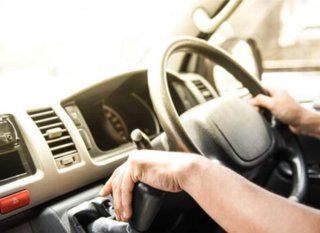Option 4: Electronic expense system
How it works
Instead of submitting a spreadsheet, drivers input their journeys directly into the company expense system. This approach is more common with larger companies.
Pros
Able to record ‘favourite journeys’, thereby reliving some of the admin burden for drivers and postcode look-ups may be possible.
Cons
Difficult to extract mileage data or run reports specifically on mileage.
Rhys Harrhy, ProFleet2 development consultant at ALD Automotive, comments: “Expenses systems, whether offline or online, are all encompassing systems that can be VAT and HMRC compliant.
“However, if companies are only interested in capturing mileage, such systems are not cost effective as they are engineered to manage all aspects of employee costs.
“They too can also be inaccurate if drivers have to enter their mileage manually.”
Option 5: Dongle/mileage logger
How it works
The driver plugs the dongle hardware into the car’s USB port and the journey is recorded via GPS.
Some systems sit on top of the dashboard and are plugged into either the cigarette lighter or the diagnostics port.
Data can be uploaded and stored on a computer or remotely depending on the provider.
Pricing varies. Some providers have a standalone one-off fee for the dongle/unit and software while others may charge for the dongle and then ongoing support.
Fuel card provider Allstar has also recently launched a dongle (see ‘option 8: fuel cards’).
Pros
Less reliance on input from the driver, reduced admin and cheaper than telematics/vehicle tracking.
Cons
Drivers may forget to plug it in, they may lose or break it and the dongle can be expensive to replace at £25-£75. It also relies on the strength of the GPS signal.
Mile Logik recommends plugging it into the diagnostics port as using the cigarette lighter may mean the device is slower to load.
Option 6: Smartphone app
How it works
Drivers download an app to their smartphone and track their journey using the phone’s GPS signal (or manually enter journey details).
The number of companies introducing smartphone mileage capture apps is growing. Several car manufacturers offer mileage capture apps free of charge, including Audi.
TomTom has launched an app that works with its telematics device (see ‘option 10: telematics) while TMC is launching an HMRC-approved app which will allow companies to move to paperless pay and reclaim as drivers can photograph receipts.
A company Mileage Logger app from DCML’s automatically synchronises journey details into an online database for fleet managers.
Pros
Smartphone usage is growing, people tend to carry their phones with them, it is more convenient than logging into a computer and is cheaper than telematics/tracking.
Cons
Employers may not provide drivers with a smartphone, drivers may forget their phone, the app needs to be enabled and may not work with all types of smartphone.
Option 7: Sat-nav
How it works
When programming in a journey a driver may be given the option to record the mileage. The Navman S50 sat-nav, for example, includes a desktop mileage reporter that exports fuel and journey details.
Pros
Dual functionality of sat-nav and mileage recording; cheaper option if company already provides drivers with sat-navs.
Cons
Drivers may use a factory-fit sat-nav which doesn’t have the option to record mileage. They may not use a sat-nav for every journey, particularly local journeys.
“It’s like zeroing the clock in your car,” says Jackson. “You’ve got to remember to do it.”
Option 8: Fuel cards
How it works
When drivers pay for fuel with their fuel card they provide the cashier with their vehicle’s mileage and registration. Fuel card providers also typically offer mileage capture software.
Allstar, for instance, has recently launched Business Mileage Monitor (BMM) with three levels of functionality: basic BMM, enhanced BMM and GPS BMM. The latter is a dongle which can be inserted into a USB port or cigarette lighter.
Jon Mackney, head of consultancy for Allstar, says the dongle allows drivers to complete a claim in an average of five minutes per month compared to an hour for manual inputting.
“It is impossible for the driver to increase the mileage recorded by the GPS unit and there is added provision of mapping functionality to ensure the direct/sensible route was taken,” he says.
“Any journeys that have been manually added to the report are marked and approvers can instantly compare claimed mileage against Google Maps.”
Pros
Companies may be able to switch policy from pay and reclaim to one where drivers reimburse the business for private fuel.
Cons
The company may not want to issue fuel cards to all drivers who do business mileage. Relying on drivers to submit their mileages when they fill up has proved haphazard for many companies with drivers forgetting or the cashier simply not asking for the mileage.






















Alastair kendrick - 26/02/2013 20:06
What evidence is there of more HMRC activity and increased charges of penalties.? I am an employment tax specialist who spends his day dealing with issues. Of this sort and also a ex inspector of taxes and I see no increased activity in this area. I really feel this is being suggested by the mileage capture industry. It is of course to ensure robust systems are in existence. In experience this means tightening the controls through the existing expenses system without starting with new systems